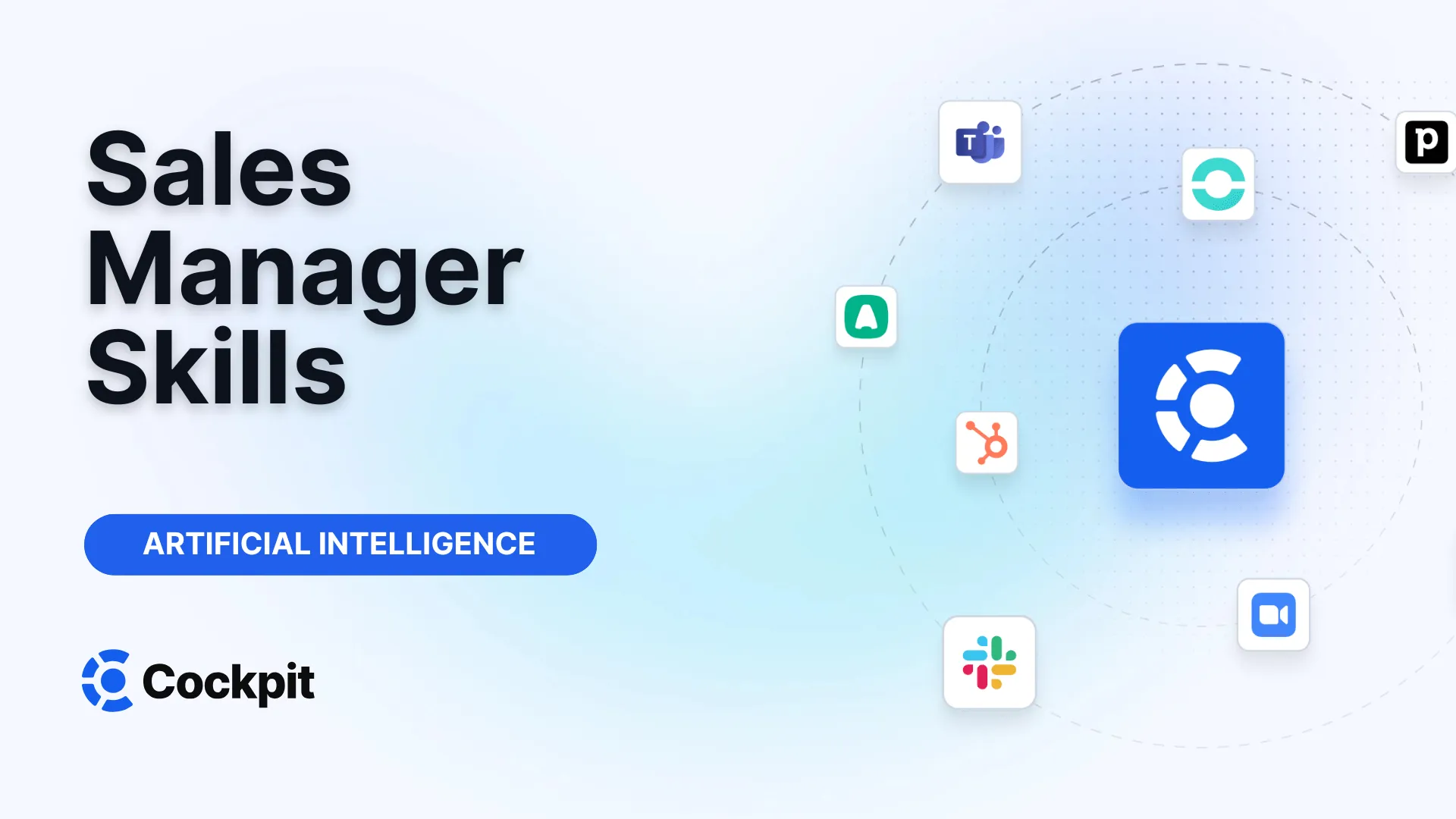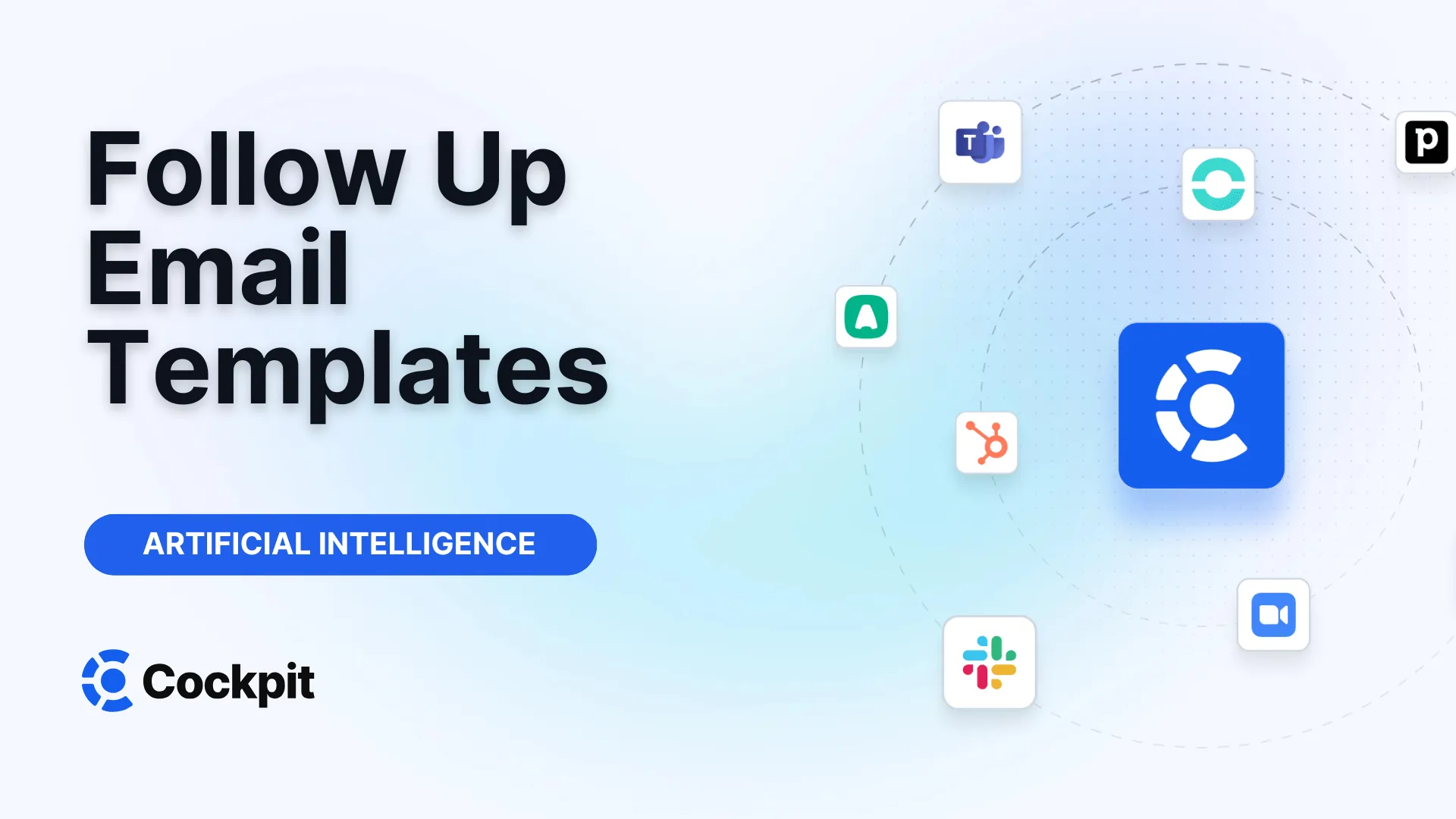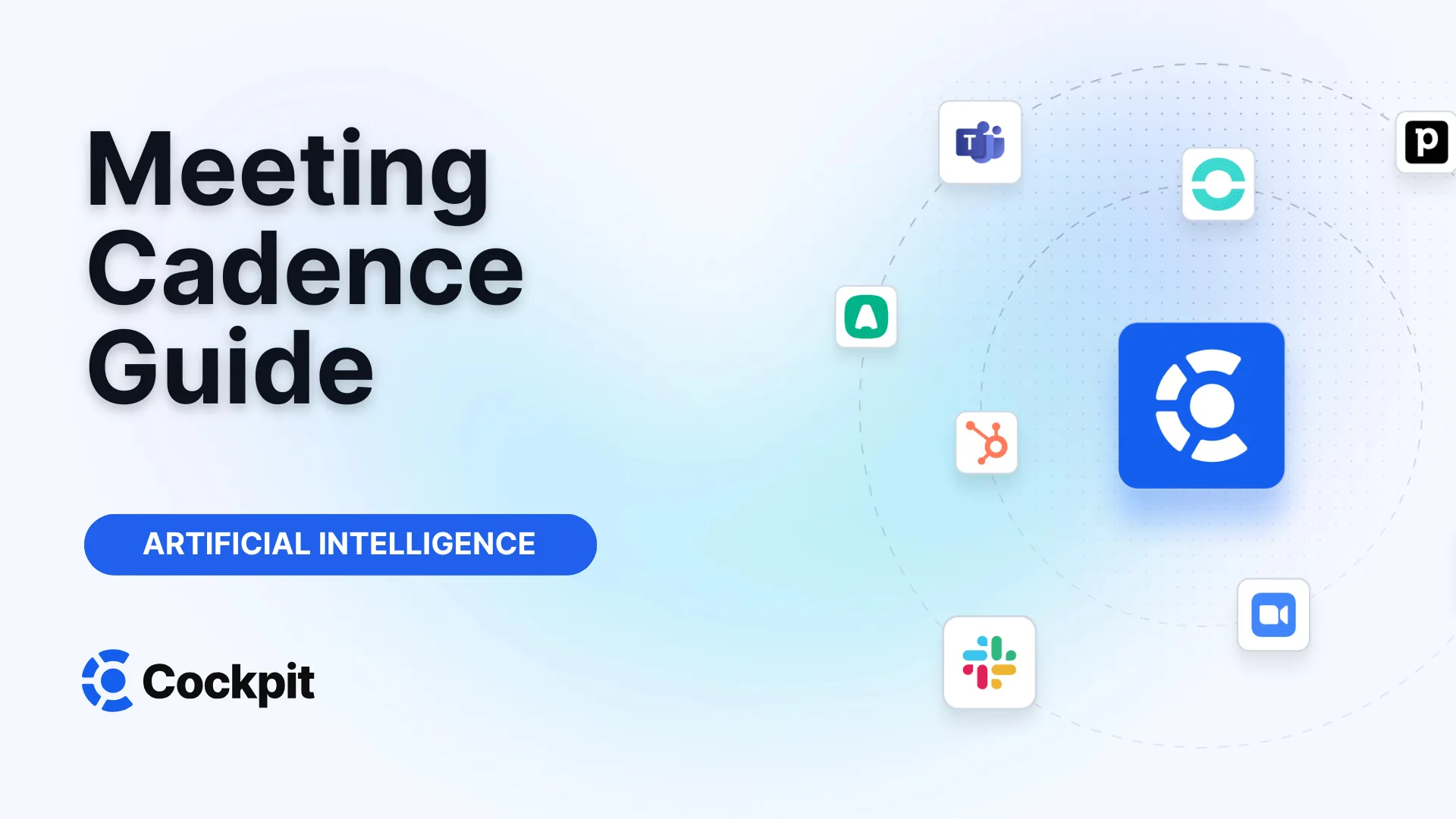Optimize your sales force in just a few clicks

Thousands of sales teams boost their performance with Cockpit. Why shouldn't you?
Explore CockpitSummary
Is your sales training program truly up to the mark? Do your salespeople receive more than just product demonstrations recorded by marketing, often delivered by people who have never closed a single sale? If you feel that your training efforts boil down to disappointing sessions disconnected from the reality on the ground, you are not alone. Many managers share this feeling of frustration, seeing their team's potential restrained by outdated approaches.
What if you could transform this training into a genuine revenue engine? How can you move from merely sharing product information to a comprehensive program that develops core skills, integrates technology smartly, and establishes a culture of continuous improvement? It is time to rethink how you prepare your teams for success by providing them with the tools and strategies not only to meet their goals but to exceed them sustainably.
Going Beyond Traditional Sales Training Limits
The main pitfall of many training programs is their one-off nature and excessive focus on the product. A seminar is organized, new features are presented, and it is hoped that magic will happen. Unfortunately, this approach ignores the daily real challenges salespeople face: managing complex objections, building trustful relationships, navigating long sales cycles, and, above all, keeping a CRM updated without spending hours on it. The result is often a team that knows the product on paper but lacks the fundamental skills to sell it effectively.
A McKinsey study highlights that the highest-performing organizations provide personalized training to their sales teams. Furthermore, HubSpot's 2020 report confirms that 65% of sales directors who exceed their ROI targets have a dedicated and well-trained sales force. The issue is no longer whether to train but rather how to do it effectively. The key is a holistic program that combines human skills, technological mastery, and in-depth customer knowledge.
This transformation requires moving from an "event training" model to a "continuous development" culture. It is about building an ecosystem where every interaction, call, and meeting becomes a learning opportunity, both for newcomers and veterans.
The Pillars of a High-Impact Training Program
To build an elite sales team, strong foundations must be laid. This goes far beyond simple product knowledge. An effective training program must revolve around three interdependent pillars: mastering core skills, intelligently adopting technological tools, and acquiring deep customer knowledge.
Mastering Core Skills: Beyond Product Talk
Sales success relies on human qualities that the best datasheet can never replace. Excellent communication is the cornerstone of any successful sales interaction.
- Develop active listening: Active listening is not just hearing what the prospect says but understanding their true intentions, unspoken messages, and deep motivations. Train your teams to analyze voice tone, hesitations, and expressions to detect genuine pain points. Organize small group workshops or call-listening sessions to identify moments when listening made the difference.
- Communicate with confidence and empathy: A confident salesperson inspires trust. This assurance does not come from arrogance but from flawless preparation. Train your teams to handle objections not as attacks but as requests for additional information. Role-playing is an excellent exercise to simulate difficult situations, such as pricing objections or competitor comparisons, allowing salespeople to refine their arguments in a safe environment.
Confidence in communication is not just about knowing what to say. It is primarily about knowing how to react when the conversation does not go as planned. It is the ability to remain calm, ask the right questions, and guide the prospect toward a solution, even facing strong resistance.
Equipping Your Team with the Right Tools and Methodology
The modern sales tech stack is rich but can quickly become a burden if not mastered. Effective training on tools is essential to turn these technologies into genuine productivity levers.
- CRM training: The CRM is the heart of the sales engine but is often underused or poorly maintained. Good training must go beyond simply demonstrating features. It must explain why quality data is crucial and how it directly impacts each salesperson's success. The major challenge remains manual data entry, a time-consuming and error-prone task.
- Other key tools: Familiarize your teams with Quote-to-Cash (QTC) software to automate quote creation, and sales intelligence platforms to identify and understand the right prospects even before the first contact.
Expert Tips
To maximize CRM adoption, make it indispensable and easy to use. Tools like Cockpit integrate with your video conferencing and telephony solutions to automatically record, transcribe, and summarize each call. Key information (next steps, objections, budget) is then synchronized into the appropriate CRM fields without any manual data entry. The CRM becomes a reliable, always up-to-date source of truth, without administrative effort.
A Customer-Oriented Product Knowledge
Knowing what a product does is one thing. Understanding how it solves a specific problem for a given customer is another. Product training must be entirely customer-focused. A Salesforce study reveals that 66% of customers expect companies to understand their needs and expectations.
- Guided tours and product roadmaps: Organize internal demonstrations not to list features but to show how they fit into the buyer's journey. Share the product roadmap so the sales team understands the long-term vision and can align their messaging on future developments, thus creating lasting partnerships with clients.
Advanced Techniques for a Modern Sales Force
Once the basics are mastered, it is time to accelerate with techniques that meet today’s buyers' expectations. This involves refining prospecting skills, mastering the entire sales cycle, and leveraging artificial intelligence for personalized, scalable coaching.
Perfecting Prospecting in the Digital Age
Cold calling and emailing are not dead, but they have evolved profoundly. Personalization and relevance are now paramount.
- Use targeted role-playing techniques: Create role-play scenarios based on real customer personas. Instead of generic scripts, provide context: "You are calling the IT director of a mid-sized industrial company that has just raised funds, and whose main competitor uses solution X." This forces salespeople to adapt their approach and anticipate specific questions.
- Build "Question Maps": For each persona, list probable questions they might ask at each stage of the sales cycle. Prepare clear and concise answers.
| Persona: IT Director of a Mid-Sized Company | Main Challenge | Likely Questions During First Call |
|---|---|---|
| Profile | Lack of visibility on IT team performance | - How does your solution integrate with our current IT system? |
| Objective | Invest in an ROI-focused, easy-to-deploy reporting tool | - What is the average deployment time? |
| - Can you provide an example of ROI with a similar client? | ||
| - What skills are needed to use the tool? |
- Create an evolving prospecting playbook: Centralize your best approaches, effective email templates, responses to common objections, and advice for structuring calls. This document should be dynamic, regularly enriched by the entire team’s successes.
Mastering the Entire Sales Cycle
The sales cycle is the complete journey transforming a prospect into a loyal customer. Every touchpoint, from initial awareness to post-sale follow-up, must be mastered.
Organize your training around the key stages of the customer journey:
- Prospecting & Qualification: Identify the right contacts and quickly assess if there is a fit.
- Discovery: Conduct in-depth interviews to uncover real issues and pain points.
- Demonstration & Value Proposition: Present the solution not as a product, but as the direct answer to identified problems.
- Negotiation & Closing: Handle last objections and obtain commitment.
- Onboarding & Follow-up: Ensure a smooth transition toward customer success and identify upsell/cross-sell opportunities.
Note
For each stage of the sales cycle, create dedicated resources. For example, a knowledge base with case studies for the value proposition stage, or video tutorials for onboarding. This allows salespeople to access the right information at the right time.
AI for Coaching and Onboarding
One of the biggest challenges for managers is providing personalized and objective coaching at scale. How can you know if your salespeople are properly applying the sales methodology during their calls? How to quickly identify key moments of a conversation to train a newcomer?
This is where conversational intelligence changes the game. Platforms like Cockpit act as a true coaching assistant.
- Accelerated onboarding: Instead of randomly having new hires listen to live calls, create playlists of the best discovery calls, the most impactful demos, or the best-handled negotiations. They learn from the best, at their own pace.
- Objective, data-driven coaching: Our AI Playbook feature automatically analyzes every call transcript to evaluate if key methodology elements were addressed (e.g., "Was the budget discussed?", "Were next steps defined?"). The manager gets an objective score and can focus coaching on identified weak points, with precise video excerpts. Say goodbye to subjective feedback and welcome targeted improvement.
- Sharing best practices: Did a salesperson brilliantly handle a complex objection? In just a few clicks, turn that moment into a video clip and share it with the whole team. Training becomes collaborative and continuous.
How to Measure the Effectiveness of Your Training Program?
Investing in training is good. Measuring its return on investment is better. To assess the impact of your efforts, you must track key performance indicators (KPIs) that go beyond simple revenue figures.
| Performance Metric | Description | Why It Matters |
|---|---|---|
| Time to Ramp-Up | The time a new salesperson needs to reach full productivity (e.g., first deal, 100% quota). | A shorter ramp-up time indicates effective onboarding and reduces talent acquisition costs. |
| Quota Attainment Rate | The percentage of salespeople who meet or exceed their targets over a given period. | This is the most direct indicator of overall team performance. An increase post-training is a strong success signal. |
| Conversion Rate by Stage | The percentage of prospects moving from one pipeline stage to the next (e.g., from "qualified" to "demo"). | Allows identification of friction points in the sales process where additional training might be necessary. |
| Average Deal Size | The average amount of a closed sale. | An increase may indicate the team is more comfortable selling higher-value offers or upselling. |
| Sales Cycle Length | The average time between first contact and deal closure. | Effective training on qualification and negotiation can help shorten this cycle and accelerate revenue. |
Warning
Distinguish leading indicators from lagging indicators. Revenue is a lagging indicator; it measures a past result. Also focus on leading indicators such as the number of discovery calls made or proposals sent. Improvements in these activities are often the first sign that your training is paying off.
Establishing a Culture of Continuous Improvement
The most successful training is the one that never ends. The ultimate goal is to embed skills development in your company’s DNA. This means creating an environment where curiosity is encouraged, feedback is constructive, and learning is collaborative.
Encourage peer-to-peer learning. Set up shadowing sessions where juniors can accompany seniors. Use tools that facilitate knowledge sharing, such as call clips and playlists in Cockpit, so that every individual success becomes a lesson for the whole team.
Ultimately, developing your sales team is one of the most profitable investments you can make. A well-trained and well-equipped team is not only more effective; it is also more engaged, motivated, and loyal. By moving from a reactive training model to a proactive, continuous development strategy, you do more than improve your sales figures. You build a sustainable competitive advantage, able to adapt and thrive in a constantly evolving market.
How Can I Adapt My Training Program to Different Sales Roles?
Adapting training is crucial, as required skills vary significantly across roles. A segmented approach is the most effective.
- For Sales Development Representatives (SDRs), whose role is prospecting and qualification, focus training on cold calling and emailing techniques, initial objection management, and expert use of sales intelligence tools and CRM for lead tracking.
- For Account Executives (AEs), who manage the sales cycle from demo to closing, training should cover in-depth discovery techniques, personalized demos, complex negotiation, and closing strategies.
- For Customer Success Managers (CSMs), whose mission is retention and expansion, training should focus on account management, identifying upsell opportunities, handling renewals, and transforming customers into ambassadors.
Use distinct training paths with content, role-plays, and success metrics specific to each role to ensure maximum relevance and impact.




